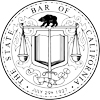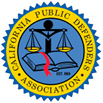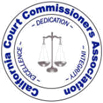Driving Under the Influence - California Vehicle Code Sections 23152(a) and 23152(b)
WHAT IS DRIVING UNDER THE INFLUENCE?
V.C. 23152(a) and 23152(b), or DUI consists of two separate offenses. V.C. 23152(a) prohibits driving under the influence of alcohol and/or drugs. V.C. 23152(b) prohibits driving with a blood alcohol content of .08% or greater.
To prove that the defendant is guilty of DUI under V.C. 23152(a), the prosecution must prove the following facts or elements:
- The defendant drove a motor vehicle; and
- The defendant was under the influence of drugs and/or alcohol at the time they drove.
To prove that the defendant is guilty of DUI under V.C. 23152(b), the prosecution must prove the following facts or elements:
- The defendant drove a motor vehicle; and
- The defendant had a blood alcohol content of .08% or higher.
If the defendant is under 21 years of age, driving with any detectable blood alcohol content (.01% or higher) is a violation of V.C. 23140, an infraction.
Upon arrest for violation of V.C. 23152(a) and V.C. 23152(b) the police will typically impound the defendant's drivers’ license and transmit it to the DMV. The Defendant is issued a temporary license that is valid for 30 days. The defendant must contact the DMV within ten (10) days of the arrest to request an administrative per se hearing or they forfeit the right to a hearing and the license is automatically suspended after 30 days.
EXAMPLES OF DRIVING UNDER THE INFLUENCE
Here are some examples of driving under the influence:
Bob had a lunch meeting with a client at a local restaurant. During the meal he drank several shots of bourbon. After the meeting ended and the client left Bob had one more for the road. While driving back to work, Bob is pulled over for driving erratically and the breathalyzer shows Bob's blood alcohol content to be .09%. Bob is arrested for DUI, since his blood alcohol content is above the legal limit.
PENALTIES FOR V.C. 23152(a) and 23152(b)
First offense:
A first offense conviction of V.C. 23152(a) or 23152(b) DUI is a misdemeanor and can result in the following penalties:
- 3 to 5 years’ Summary probation;
- Ninety six (96) hours to six (6) months in county jail; and/or
- A fine of up to two thousand dollars ($2,000.)
The defendant's driver's license will be suspended for 6 months.
Probation conditions include requirements that the defendant not drive a vehicle with any measurable blood alcohol content, not refuse to submit to a test to determine their blood alcohol content if they are stopped for a violation of V.C. 23152(a) and V.C. 23152(b), not drive without valid insurance, and to enroll in and successfully complete a drinking driver program, The length of the program is determined by the level of the blood alcohol reading. If the blood alcohol level is below .20 the Defendant will be required to complete a three (3) month program. If the blood alcohol level is .20 or above or the Defendant refused an alcohol test he must complete a nine (9) month program.
Second offense:
A second offense conviction for V.C. 23152(a) or 23152(b) DUI within 10 years of a separate DUI or V.C. 23103.5, wet reckless conviction, is a misdemeanor and can result in the following penalties:
- 4 to 5 years’ Summary probation;
- Ninety six (96) hours to three hundred sixty four (364) days in county jail; and/or
- A fine of up to two thousand dollars ($2,000) plus the penalty assessments.
The defendant's driver's license will be suspended for 2 years.
Probation conditions include requiring the defendant to not drive a vehicle with any measurable blood alcohol content, not refuse to submit to a test to determine their blood alcohol content if they are arrested for any further violations of V.C. 23152(a) and V.C. 23152(b), not drive without valid insurance, and enroll in and successfully complete a drinking driver program that lasts eighteen (18) months or thirty (30) months, at the court's discretion.
Third offense:
A third offense conviction for V.C. 23152(a) and 23152(b) DUI within 10 years of any two separate DUI or V.C. 23103.5 wet reckless convictions in any combination is a misdemeanor and can result in the following penalties:
- 5 years’ Summary probation;
- One hundred twenty (120) days to three hundred sixty four (364) days in county jail; and/or
- A fine of up to two thousand dollars ($2,000) plus the penalty assessments.
The defendant shall be designated a "habitual traffic offender" for three (3) years under V.C. 14601.3.
The defendant's driver's license will be suspended for 3 years.
Probation conditions include requiring the defendant to not drive a vehicle with any measurable blood alcohol content, to not refuse to submit to a test to determine his blood alcohol content if he is arrested for any further violations of V.C. 23152(a) and V.C. 23152(b), to not drive without valid insurance, and to enroll in and successfully complete a drinking driver program that lasts at least thirty (30) months.
Fourth and subsequent offenses:
A fourth or subsequent offense conviction for V.C. 23152(a) and 23152(b) DUI within 10 years of separate DUI or V.C. 23103.5 wet reckless cases in any combination is a wobbler and can be charged as either a misdemeanor or a felony at the discretion of the prosecutor. A misdemeanor can result in the following penalties:
- 5 years’ Summary probation;
- One hundred eighty (180) days to three hundred sixty four (364) days in county jail; and/or
- A fine of up to two thousand dollars ($2,000.)
The defendant shall be designated a "habitual traffic offender" for three (3) years under V.C. 14601.3.
The defendant's driver's license will be suspended for 4 years.
Probation conditions include requiring the defendant to not drive a vehicle with any measurable blood alcohol content, to not refuse to submit to a test to determine his blood alcohol content if he is arrested for any further violations of V.C. 23152(a) and V.C. 23152(b), to not drive without valid insurance, and to enroll in and successfully complete a drinking driver program that lasts at least thirty (30) months.
A felony can result in the following penalties:
- 5 years’ Summary probation;
- Up to three (3) years in county jail; and/or
- A fine of up to two thousand dollars ($2,000.)
The defendant shall be designated a "habitual traffic offender" for three (3) years under V.C. 14601.3.
The defendant's driver's license will be suspended for 4 years.
Probation conditions include requiring the defendant to not drive a vehicle with any measurable blood alcohol content, not refuse to submit to a test to determine their blood alcohol content if they are arrested for any further violations of V.C. 23152(a) and V.C. 23152(b), not drive without valid insurance, and enroll in and successfully complete a drinking driver program that lasts at least thirty (30) months.
COMMON DEFENSES FOR V.C. 23152(a) and 23152(b)
Testing errors:
The defendant may request an inspection of the records of the breathalyzer to ensure that it was calibrated properly.
In addition, there are many substances and medical conditions that can cause the breathalyzer to generate a falsely high reading even if it was properly calibrated. The attorney must thoroughly interview the client to determine whether the client suffers from a number of medical conditions that can cause false readings on the test. The defense can have the blood sample retested by an independent testing lab which may result in a different reading.
Furthermore, if a blood test was taken, the phlebotomist may not have followed required procedures, and as such, the blood may have become contaminated. Finally, the testing machines may have malfunctioned.
Police procedural errors:
Police are required to follow certain procedures during DUI roadside investigations. There may not have been probable cause for the vehicle stop. If not, the failure can be tested in court by a motion to suppress.
The Officer may not have been clear in his questioning, thus the answers given by the defendant may have been tainted and inaccurate.
The arresting officer may have made some error during the arrest. The Field Sobriety Tests may have been conducted in a location not suitable for a good performance. The Defendant may not have been offered a choice of a breath or a blood test, but instead have been ordered to take one or the other by the police officer.
If the police are alleging a refusal to take a chemical test, we must determine if the police officer gave the proper warnings to the defendant. The defense may challenge the validity of the arrest under the above conditions.
Plead to lesser charges:
The defense can try to negotiate a plea to a lesser charge that carries less severe penalties. In many instances the prosecution may be willing to offer a reduced charge of a wet reckless (violation of Vehicle Code Section 23103.5), which carries a significantly lesser sentence.
HOW WE CAN HELP
I have been practicing criminal defense for over 35 years. I have represented people on hundreds of DUI cases and have a proven record of success. I will begin by combing the police reports for any helpful information and inconsistencies or possible errors. I will then meet with you to discuss your side of the story and to determine possible defenses. I employ a team of investigators, legal researchers, and expert witnesses that will help present the strongest possible case. I served for over sixteen years as a Judicial Officer of the Sacramento Superior Court and have established key relationships that can be used to greatly benefit my clients. I will aggressively fight for you to get you the best possible result on your assault case including taking the case to trial if needed. Call Foos Gavin Law Firm at (916) 779-3500 or email us at Contact@foosgavinlaw.com for a no-cost initial consultation."















